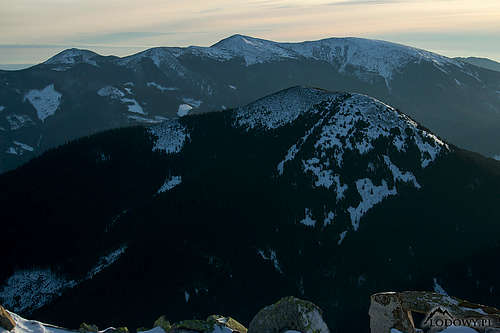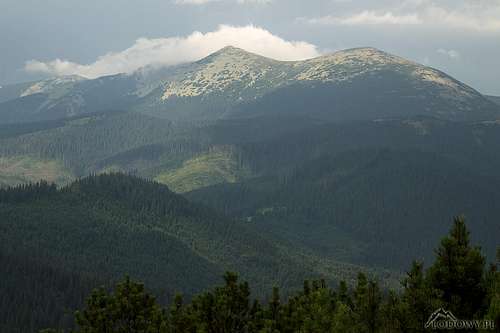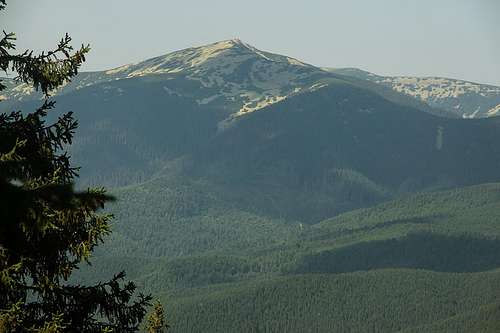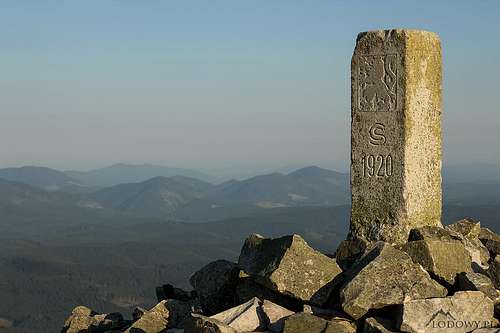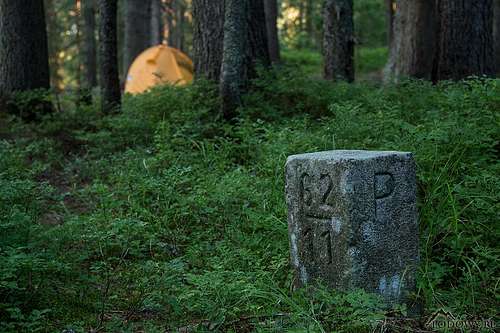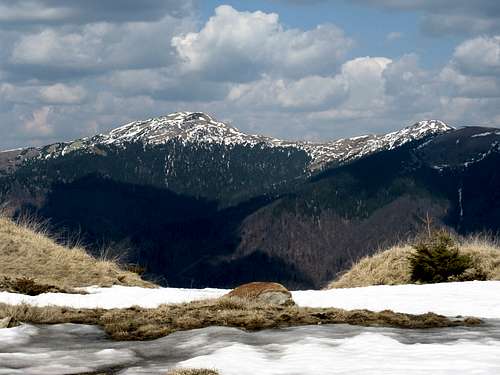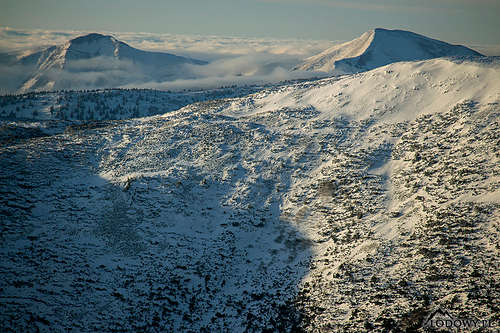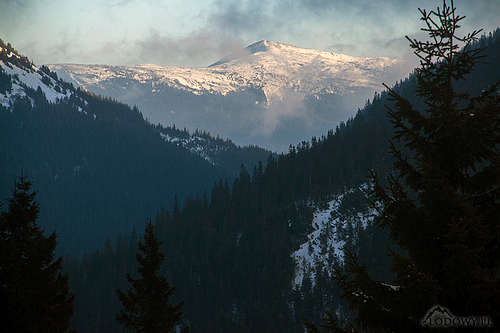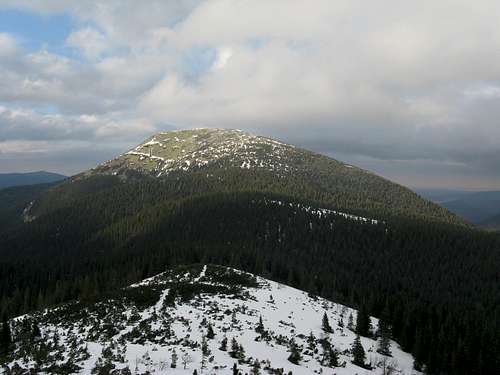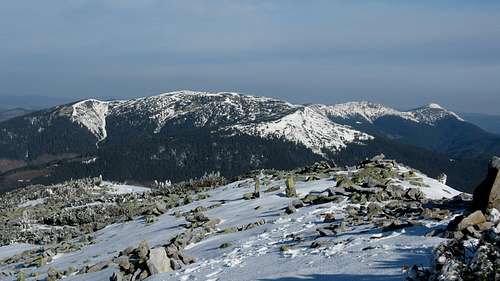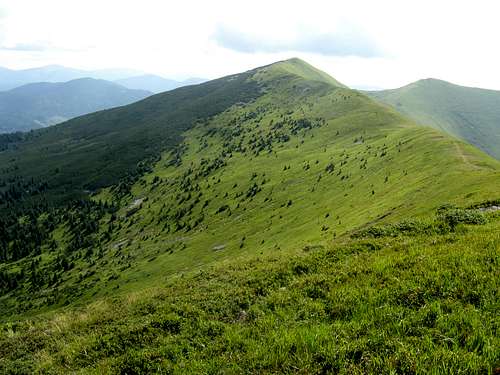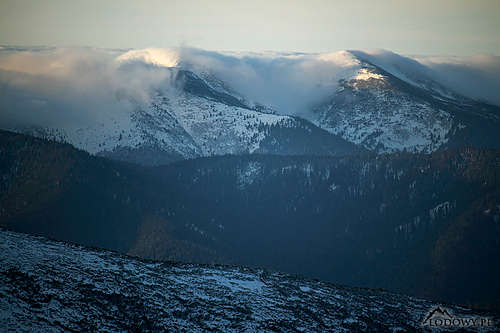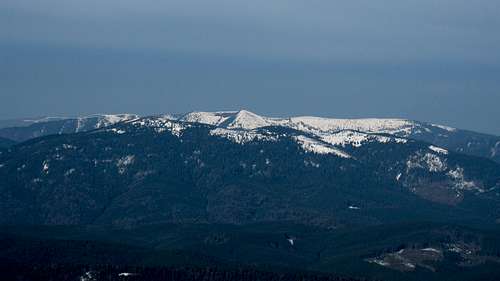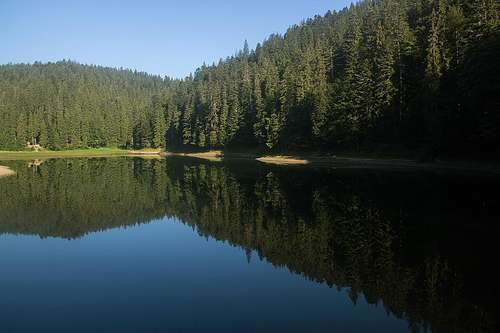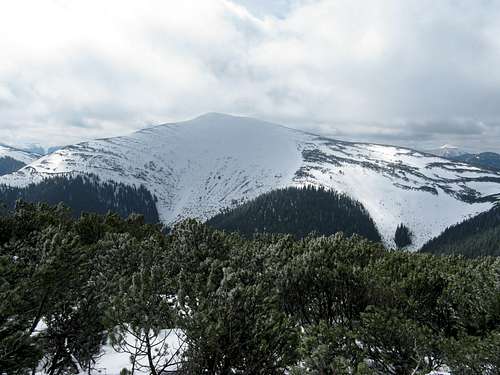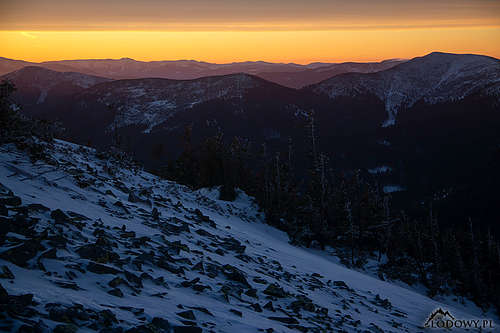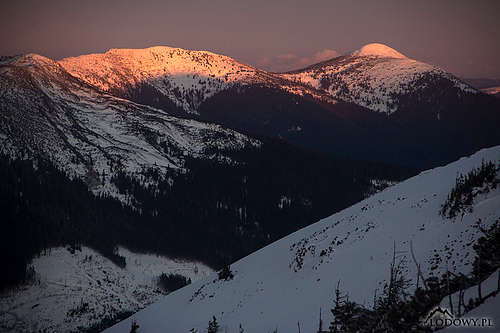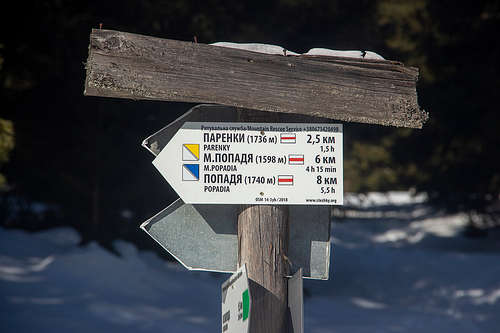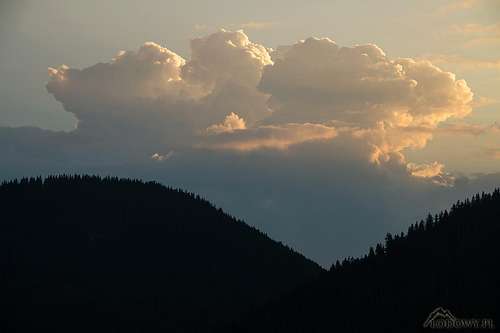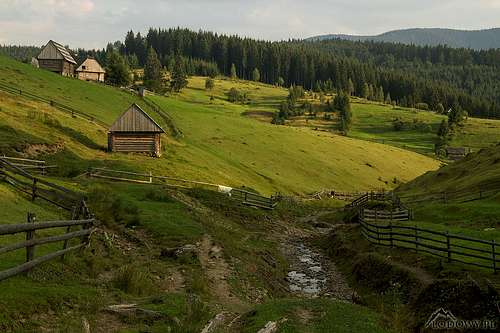-
 4420 Hits
4420 Hits
-
 79.78% Score
79.78% Score
-
 11 Votes
11 Votes
|
|
Area/Range |
|---|---|
|
|
48.54900°N / 24.11930°E |
|
|
Hiking |
|
|
Spring, Summer, Fall, Winter |
|
|
6024 ft / 1836 m |
|
|
Overview
The following summits have more than 500 m of prominence: Syvulia, Dovbushanka, Moloda, Grofa, Velyka Bratkivska, Kamyanka (southwest of the village of Synevyrs'ka Polyana), Bushtul, Strymba, Stanymyr (between the villages of Stara Huta and Bystrytsia), Ovul (between Popadia and Syvulia), Nehrovets, Kanch (east of Synevyrs'ka Polyana) and - assuming that the western frontier of the Gorgany to the south of the Torun Pass runs along Holyatynka creek - Smerek at 1421 m (north of the village of Verkhnyi Bystryi). The first four of these summits and Smerek have over 600 m of prominence. As the Gorgany is formed of flysch, landslides are not uncommon here and sometimes they create lakes, of which Synevyr Lake in the northwest part of the mountains, over 20 meters deep, is the largest and deepest. |
Red Tape
|
Unfortunately, since late 2010s the ridge of Dovbushanka has been closed to hikers. It lies within a strict nature reserve that bears the name of Gorgany and stretches as far west as the outskirts of Bystrytsia village. There are a few smaller protected areas in the Gorgany, one of them on the Popadia-Grofa Ridge, and in the southwest is Synevyr National Park, but you can enjoy hiking there as well as bivouacking at designated spots. The nature reserves were originally intended to preserve stands of the Arolla pine (Stone pine). |
Camping & Trails
|
Day hike opportunities are rather limited, for example the distance between Osmoloda and the summits of Velyka Syvulia or Popadia is about 19 km. There are no mountain huts at all. It is highly advisable to take your own tent – there are designated bivouacking sites, but you can bivvy practically anywhere, except for nature reserves. Less than 1.5 km away from the summit of Grofa are two hiker’s shelters:
There are several disused shepherd huts or log cabins, some of them might be suitable - see here. It should not be difficult to find a bed (and often breakfast) in the villages. The key hiking trails have been waymarked with stripes of different colors against white background – the way it is in Poland, Czechia, Slovakia and Hungary. |
Mountain Conditions
Maps
online map on freemap.sk
The Gorgany against the other ranges of the Ukrainian Carpathians: Annotated by A. Rugała Peper/Waterproof 1:50,000 maps by Hutyriak can be bought online (NB in Ukraine their price is lower): |
Getting There
Select External Links

|




